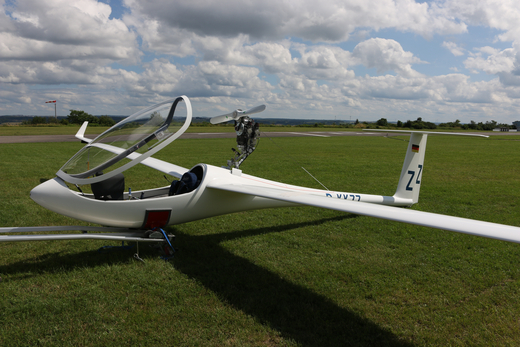“The engine runs like a charm,” said a delighted Gerd Spiegelberg in the spring. He is one of the owners/pilots of the now 16 delivered Antares 18T. By April, all propulsion systems for the Antares 18T and Antares 23T had received the modifications that now give the Solo 2350C very good operational reliability. The propulsion concept for the Antares, which is linked to high demands, with home return aids has thus been implemented. After all, the goal was high reliability, high climbing ability even at high altitudes, safe starting in flight, a low vibration level and comfort in operation. A weak point in the propulsion system, which had become apparent in other glider models and then also affected the Antares, was cured in a successful cooperation with Solo. For this purpose, a propeller shaft and a new mounting for the propeller shaft were developed and tested, which today convinces with its stability. In the meantime, all Antares T fly with it. With the 30 hp of the Solo 2350 C, the Antares T have significantly more power than comparable turbos. This provides sufficient power reserves for high altitudes and high temperatures. With a generously dimensioned engine mount made of special steel and dampers, the two-stroke engine was made to stop shaking. Elaborately ground weld seams avoid load peaks in the material that could quickly overstress it. In favor of safety, against cracking due to vibrations, no compromise was made in terms of weight. The proud seven kilograms of the engine mount are a sign of solidity. In the Antares, the Solo now runs with low vibration. Reliable safe starting in flight is possible in two different ways. The system with optional starter and adjustable fuel supply (throttle), with which the transition to powered flight functions with the least loss of altitude and without any aerial acrobatics, has long since proven itself. In the windmill effect, the Solo can be brought to life at the relatively low speed of around 110 km/h thanks to the stepped extension system of the engine.
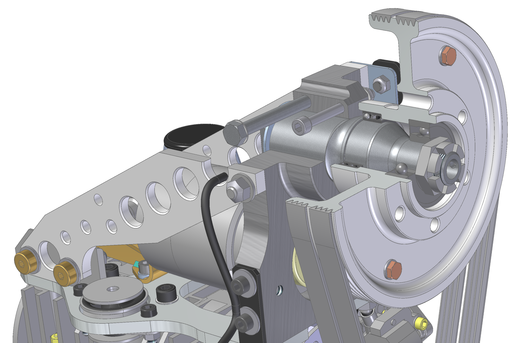

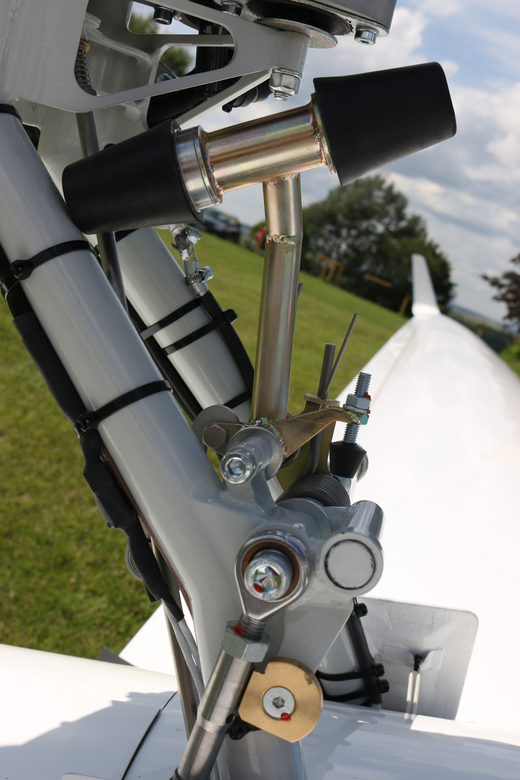
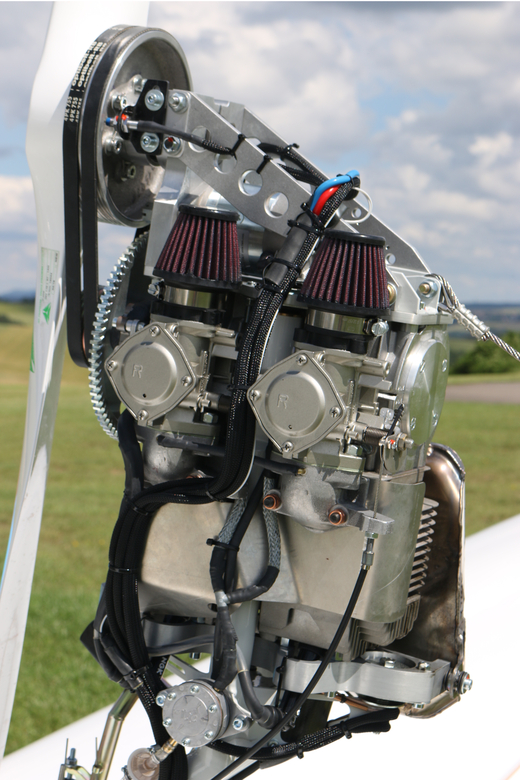
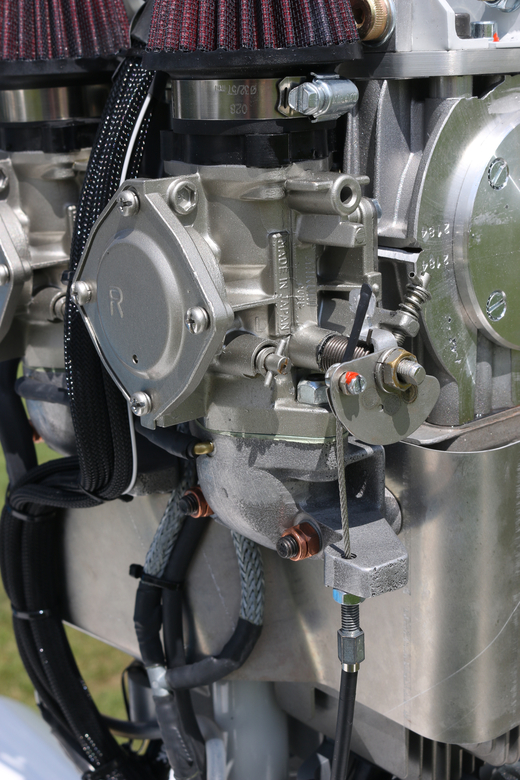
No matter which starting method the pilot chooses, he is not required to perform many actions in a fixed sequence – operating the ignition and pressing a button is all that is needed. Everything is done automatically in rapid succession, with much being controlled mechanically, such as the opening and closing of the engine compartment flaps for powered flight. The pilot can limit himself to switching on the ignition in the ILEC operating and monitoring device in the instrument panel. The electric spindle drive extends the engine to 85 degrees, the propeller stopper moves back – mechanically controlled. When equipped with a starter, the propeller tower then advances further when the start button is pressed, and the engine is started by the starter. For the start, the gas is only slightly open. Injection can be used to facilitate the starting of a cold engine. With electric starter, the altitude loss for engine startup amounts to less than 20 meters. The increase in resistance without motor power is limited to just under 10 seconds, during which the electric spindle extends the power unit. Without the starter option, the deco valve opens as soon as the engine reaches the 85-degree position. At around 110 km/h, the propeller then turns in the windmill effect. If the speed sensor reports that the propeller is rotating sufficiently fast, the engine continues to swing forward and the deco valve closes. In the 90-degree working position, the propeller then turns even faster thanks to the better inflow here and starts up. The inherent sink rate with the engine extended is around 1.7 m/s at 110 km/h, which is still within acceptable limits. Retraction takes place quickly at the push of a button. After returning the throttle to idle and ignition to OFF in the ILEC control and monitoring unit, everything else happens without pilot intervention: A mechanically implemented automatic system opens the engine compartment doors, and the propeller tower swings back 25 degrees. If flown at around 95 km/h, the propeller will quickly come to a standstill. If the automatic system detects standstill, the tower swings back another five degrees and the deco valve opens so that the propeller turns against the propeller stopper, which has slid into the propeller circle. At the same time, a special mechanism prevents damage to the stopper, should the propeller still rotate too fast. In this case, the stopper recedes. After successful lowering, the turret retracts completely and the engine bay doors close. In just a few seconds, the Antares 18T/23T thus changes to gliding configuration. Antares-T pilots need not fear high temperatures of 30° Celsius and more with their engine, nor high passes in the Alps. The propeller with the layout not usual for a turbo, with the large blade depth outside, guarantees good efficiency. The service ceiling with the 30 hp SOLO is over 4000 meters. With the fuel supply in the 16.5-liter fuselage tank, a range of around 400 kilometers can be achieved using the sawtooth method. Around one hour of engine running is possible at full load.
Cover photo: Antares 18T – flying in before delivery

